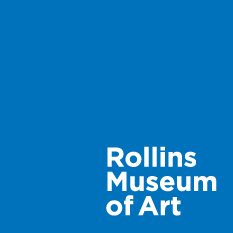Becky Suss (American, b. 1980), Houseboat on Dull Lake in the Valley of K, 2019, Oil on canvas, 84 x 144 in. The Alfond Collection […]
Work of the Week: Käthe Kollwitz, “Untitled (Mob [Family] with Dead Child)”
Käthe Kollwitz (German, 1867–1945), Untitled (“Mob [Family] with Dead Child”), n.d., Dry point etching, Gift of Mrs. Ruth Funk, Cornell Fine Arts Museum 2001.04.09.PR […]
Work of the Week: Carmen Herrera, “Untitled”
Carmen Herrera (Cuban, 1915-2022), Untitled, 2013, Acrylic on canvas, 72 3/64 x 36 7/32 in. The Alfond Collection of Contemporary Art, Rollins Museum of Art, […]
Work of the Week: Shirin Neshat, “In Deference”
Shirin Neshat (American, Iranian, b. 1957), In Deference, 2018, Dye-sublimination on aluminum, 25 9/16 x 40 in. The Alfond Collection of Contemporary Art at Rollins […]
Work of the Week: Dawoud Bey, “Janice Kemp and Triniti Williams”
Dawoud Bey (American, b. 1953), Janice Kemp and Triniti Williams, 2012, Archival pigment prints mounted on dibond, 40 x 64 in (40 x 32 […]
Work of the Week: Jacob Lawrence, “Revolt on the Amistad”
Jacob Lawrence (American, 1917-2000), Revolt on the Amistad, 1989, Silkscreen, 35 x 25 3/8 in. Museum Purchased from the Wally Findlay Acquisition Fund, 1995.26., © […]
Work of the Week: Emory Douglas, “Warning to America-We are 25-30 million strong”
Born in Grand Rapids, Michigan, Emory Douglas moved with his mother to San Francisco when he was eight. At age […]
Work of the Week: Romare Bearden, “Byzantine Frieze (from the series Ritual Bayou)”
Romare Howard Bearden American (Charlotte, North Carolina, United States, 1911 – 1988), Byzantine Frieze (from the series Ritual Bayou), 1971, lithograph collage, 17 7/8 […]
Work of the Week: Reginald Marsh, “A Young Woman Reading on the Subway”
I recently read Jennifer Egan’s historical novel Manhattan Beach, a noir thriller that transported me to New York during World War II. The main character, Anna Kerrigan, comes of age at a time when the country grappled with war abroad and its effects at home. Resilient and determined, Anna works at the Brooklyn Naval Yard as a diver repairing ships. The rich descriptions of the naval yard, the city streets, and the dark, smoky nightclubs, paint a vivid picture of the context in which she lived and worked. Newspapers reported on the war in Europe, and she learned of individuals’ experiences through letters and friends’ accounts. While reading, I thought about how young women experienced the city at this historical moment.
Work of the Work: Tom Peterson, “The Divine Comedy”
This painting references the titular narrative poem by Dante Alighieri (1265-1321), a work of Italian literature originally published in 1320. Dante’s Divine Comedy chronicles the author’s supposed visit to the realms of the afterlife, narrated in first person. Towards the right of the composition, Dante the Pilgrim—the figure holding a book—traverses through Hell, indicated by the fiery orange background. Specifically, Peterson referenced the thirteenth canto of the Inferno, where Dante and his spiritual guide Virgil journey through the forest of the suicides in the seventh circle of Hell. In the Inferno, violence against oneself is punished by the transformation of the body into a tree where the mythical harpies nest. In the narrative, Dante plucks a twig from a gnarled branch, only to witness blood gush from the wound and the trunk angrily yelp at him.
Work of the Week: Cig Harvey, “Scout and the Clementines, Rockport Maine”
Cig Harvey describes that the series examines her relationship with life itself, and it began after a critical moment in her life. Harvey was in a car accident, and though physically unharmed, she did not speak for six weeks after the event. She was overwhelmed with thoughts of what could have happened if her daughter had been in the car with her. The idea that anyone’s life can change drastically in an instant altered Harvey’s perspective significantly, especially with her role as a mother.
Work of the Week: Ilya Bolotowsky, “Abstraction”
Engaging with art in challenging situations can provide respite and solace and remind us to find joy and beauty in basic things we often take for granted. As the new year unfolds and presents us with unexpected questions to consider and new goals to pursue, once again, I turn to art. It seems that for Bolotowsky, abstract art provided the order and balance needed in a historical moment that saw enormous socio-political changes as well as defining shifts in the art world.
The Notion of Place
Last season, it had been two years since we introduced the theme of Place as Metaphor for our main collection […]
Ridley Howard: Paintings & Moments
Earlier this week I happened to get off the elevator on the second floor of The Alfond Inn. I had […]
Jordan Casteel: Voice & Process
Jordan Casteel and I have Italy and New York in common as career influencers. It was during a semester spent […]
